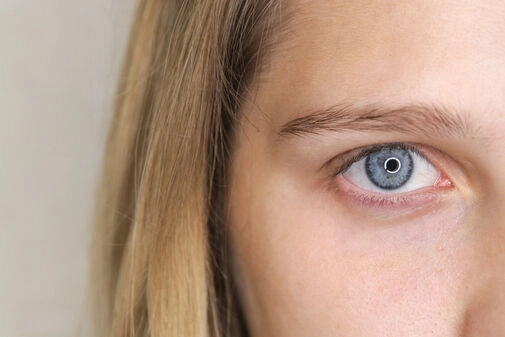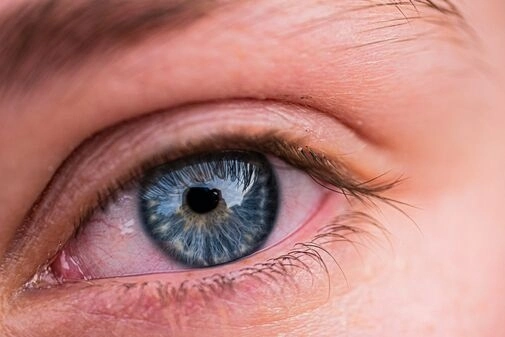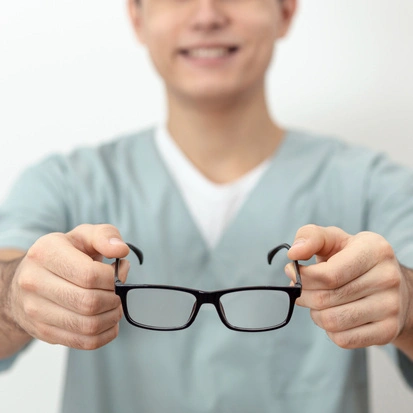The cornea, the dome-shaped transparent layer at the front of your eye, plays a vital role in vision. It acts like a window, allowing light to enter and focus on the retina, where it's converted into electrical signals sent to the brain. For clear vision, the cornea needs to maintain its transparency. Corneal edema, also known as corneal swelling, disrupts this delicate balance by causing fluid buildup within the cornea, making it cloudy and affecting vision.
In this post, we will discuss corneal edema, its causes, symptoms, diagnosis, and treatment options. Understanding this condition, you can better identify potential problems and seek timely medical attention.
The Role of the Cornea and Endothelial Cells
The cornea comprises several layers, each with a specific function. The innermost layer called the endothelium, acts like a pump, constantly removing excess fluid from the cornea. This maintains the cornea's hydration and transparency, ensuring optimal light transmission.
When the endothelial cells are healthy, they efficiently pump out fluid, keeping the cornea clear. However, damage or dysfunction of these cells can lead to fluid accumulation within the cornea, causing swelling and affecting vision.

Causes of Corneal Edema
Corneal edema can arise from various underlying conditions. Here's a breakdown of some common causes:
Fuchs' Endothelial Dystrophy:
This is a genetic condition where the endothelial cells gradually deteriorate
over time. It typically affects people over 50 and is more prevalent in women.
Pseudophakic Bullous Keratopathy:
This complication can occur after cataract surgery where the natural lens is
replaced with an artificial one (intraocular lens). It's caused by damage to the
endothelial cells during surgery.
Corneal Injury:
Trauma to the eye, such as a scratch
or scrape on the cornea, can damage the endothelial cells and lead to swelling.
Inflammatory Eye Diseases:
Conditions like keratitis
(corneal infection) and uveitis (inflammation within the eye) can cause the cornea
to swell.
Endothelial Decompensation:
This occurs when the
endothelial cells lose their ability to function properly due to factors like Fuchs'
dystrophy, previous eye surgery, or prolonged contact lens wear.
Other Causes:
Corneal edema can also be associated
with systemic health conditions like diabetes, high blood pressure, and
malnutrition.


Signs and Symptoms of Corneal Edema
The symptoms of corneal edema can vary depending on the severity of the condition. Here are some common signs to watch out for
Blurred vision:
This is often the most noticeable symptom, especially upon waking up in the morning.
Vision may improve somewhat throughout the day as fluid drains from the cornea.
Glare or halos around lights:
This symptom can be bothersome, particularly at night or in brightly lit
environments.
Eye pain or discomfort:
You might experience a gritty,
scratchy sensation or general discomfort in the affected eye.
Sensitivity to light (photophobia):
Bright lights may feel
uncomfortable or even painful.
Seeing halos around lights:
This can be a distinctive
symptom of corneal edema.
Blisters (rarely):
In severe cases, small, painful
blisters may form on the corneal surface.
If you experience any of these symptoms, consult an eye doctor for a comprehensive evaluation. Early eye exams are also important to prevent eye complications and maintain good vision.
You can book an appointment at Elite Eye Care, the Best eye care center in New York for an early eye examination.
Additional Considerations:
Contact Lens Use:
In some cases of corneal edema, especially those related to endothelial cell
dysfunction, contact lens wear may need to be discontinued or modified. Your eye
care experts can advise you on the best course of action.
Artificial Tears:
Using artificial tears throughout
the day can help keep the eyes lubricated and may reduce discomfort associated with
corneal edema.
Eye Protection:
Wearing protective eyewear to shield
your eyes from injury or irritants is crucial to prevent further damage to the
cornea, especially if you have underlying endothelial cell issues
When to See a Doctor:
If you experience any symptoms suggestive of corneal edema, such as blurred vision, halos around lights, or eye pain, book an appointment at a nearby eye care center immediately.

Conclusion:
Corneal edema is a vision-threatening condition that requires prompt medical attention. By understanding the causes, symptoms, and treatment options, you can proactively maintain your eye health. If you experience any signs of corneal edema, don't hesitate to schedule an appointment with your eye care experts for a comprehensive evaluation and appropriate treatment plan.
Disclaimer:
This blog post provides general information only and should not be construed as medical advice. Please consult with a qualified healthcare professional for personalized guidance on diagnosing and treating corneal edema.
